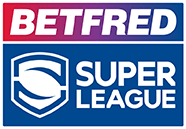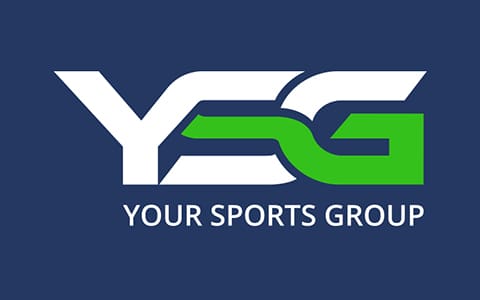The town of St. Helens has lost its most famous adopted sporting son, writes Alex Service.
His loss will be felt throughout the wider rugby league community and in South Africa, where he is remembered as the young Springbok, switched from centre to wing, who tormented his opposite number, Tony O’Reilly by running in a hat-trick against the visiting British Lions at Newlands, Cape Town in 1955. It should also be mentioned that Tom is the President of the South African Rugby League.
Master Coach Jim Sullivan had steered the St. Helens club into rugby league’s elite, with a league Championship [1953] and Challenge Cup victory [1956] but by the autumn of 1957, supporters’ continual criticism of the team’s ‘creeping barrage’ style of play, as one correspondent put it, galvanised the Saints’ Board into looking for a new star.
They targeted Karel Thomas van Vollenhoven, a supremely-gifted all-round athlete, who could run 100 yards in 9.8 seconds.
Tom was selected for the South African rugby union team for the visit of the 1955 British Lions.
In the Second Test at Newlands, Cape Town, on August 20, he roared in for a fantastic hat-trick as the visitors were beaten 25-9. He thus became the first South African player to score three tries in a Test match in his own country and became an instant sporting hero. Little wonder that he began to attract interest from leading rugby league clubs like the Saints. His signing, a top-secret affair from under the noses of the South African rugby union authorities – and under intense competition from Wigan – is a story in itself and cost the club £7,230 – the biggest fee paid for a rugby union player or for a transfer between professional clubs at the time, but it was money well spent!
Indeed, he was to ‘electrify the crowds’ with his pace and finishing ability.
As far as Saints’ fans of a certain vintage were concerned, Alf Ellaby was the man. An unlikely recruit from football, he was the first ‘superstar’ and virtual matinee idol of the Knowsley Road crowd, topping the league’s try-scoring charts on three occasions, including a massive 55 touchdowns in his first full season in 1926-27. The coming of Ellaby signalled the Saints’ first era as a team capable of challenging for major honours, including a memorable first-ever League Championship success in 1932.
A new, vibrant era of success was about to unfold in the late 1950s, however, with Tom van Vollenhoven, the new kid on the block, scoring freely in his new code and given the fact that he was in a side containing many great players, such as Austin Rhodes, Alex Murphy, and Vince Karalius, there was a distinct possibility that he would soon be re-writing the record books for himself.
Since making his debut [with a try] against Leeds at Knowsley Road, on October 26 1957, in front of 23,000 fans, Vollenhoven raced over for 45 tries in 34 appearances. In February 1958, Alf Ellaby, the Hat Trick King, met the Young Pretender before a match against Oldham at Knowsley Road and was clearly impressed by what he had seen: “Vollenhoven is amazingly fast and from the way he moves has grit and natural ability,” he wrote later. “Speed by itself is not the main essential to be a wingman except, possibly with the clear run in. Your best wingmen may be yards slower, but with sudden acceleration, deceiving footwork and change of pace the really clever footballer can beat the pure sprinter.”
Tom was certainly different. He was from a foreign country, spoke differently [Afrikaans was his first language] and had blond-cropped hair. At five feet ten inches tall and twelve stones, he was not as physically dominant-looking as Ellaby had been, but he possessed fantastic strength for his size.
“I remember sitting on the bench at Hull when Vol had one of his first runs down the touchline,” recalled Steve Llewellyn. “As defenders came across to bury him, he warded them off with his hip. Sully [coach Jim Sullivan] said, ‘Did you see that – incredible!’ He could ride tackles superbly and had phenomenal all-round ability.”
Peter Harvey was in his late teens when he first watched him from the Knowsley Road terraces and later became a teammate: “In his first three seasons at Saints he was brilliant,” he said. “He was literally magic. I used to go behind the posts to watch him, rather than the Popular Side. It was best to watch the great man running in a straight line to appreciate his magic, because Vol could run in a straight line and beat people with his change of pace.
“He would take a line five yards off the touchline which gave him enough room on the outside if he wanted it. Then he would hold his line and actually stop people as they ran at him and then accelerate away. I could never quite work out how he did it. Even when we played together at Saints I would be asking myself ‘How did he do that?’ It was just artistry and with Vol you were looking at an artist. Like all true art you can’t analyse it. You do not know why true art is good, you look at it and say that something is much better than the other. In Tom’s case, it was the ease with which he did everything and the ability to change pace when everyone else was running flat out.
“He used to do it in training. He would just accelerate away like Seb Coe used to do in his pomp. You could see him change gear because his head would go to one side. That was Vol stepping up from threequarter pace to overdrive. When you thought he was running flat out – and as people went to tackle him – he would accelerate away.”
Tom helped to take the St. Helens club to the next ‘stage’ of success, with Lancashire Cup, League Championship and Challenge Cup victories within the first four years – hitherto unparalleled achievements. The St Helens club had capitalised on the ‘Vollenhoven effect’ by building a new Main Stand, with demand for season tickets at an all-time high.
They were great times to watch the team and Tom’s presence meant that other South African players were tempted to come over and try their hand in the professional code. One of the most effective was Jan Prinsloo, who played 89 times for the Saints, scoring 70 tries. He had pace, certainly, but also used his strength to great effect, very much like the wingers of today. They became, albeit briefly a deadly duo on the flanks. There was one memorable headline after one game: “Jan and Van Pan ‘em” which many older supporters remember to this day. In 1962, Saints also signed another winger – Len Killeen, who went on to become a fantastic points-scorer and match-winner supreme, one of the stars of the club’s four trophy season in 1966 and a Lance Todd trophy winner to boot.
In his early days Tom had Duggie Greenall at number three as both ‘minder’ and provider producing sensational results when he first came. The Flying Springbok topped the charts in three successive seasons [1958-59, 1959-60 and 1960-61]. Tom scored a massive 62 tries in the 1958-59 campaign, overtaking Alf Ellaby’s existing individual record of 50 tries set in 1926-27.
Despite being plagued by hamstring trouble, he also scored a magnificent hat-trick, as Saints beat Hunslet 44-22 in the 1959 Championship final at Odsal. “We were losing 4-12 early on,” remembers [full-back] Austin Rhodes, “but then Vol scored this fantastic length-of-the-field try, the best I have ever seen, and we went on to win the match.”
Remember too the sheer poetry in motion of his marvellous Wembley try against Wigan in the 1961 Challenge Cup final and the fabulous inter-passing with his centre, Ken Large.
Ten years at top level did have a marked effect on Tom. Austin Rhodes maintains that he never quite reached the dizzy heights of his first three seasons and that the ramifications of his [1959] hamstring injury tempered his sizzling pace somewhat. It was an era, of course, when one of the main objectives was to nullify the opposition’s star players and get them off the field, if possible. Tom suffered from knee trouble in the mid-1960s too. He played at Wembley against Wigan in the 1966 Challenge Cup final, but missed the Championship final the following week at Swinton, when Tony Barrow deputised. He was still a good ‘un, however, and scored a hat-trick in his last ‘derby’ game against Wigan, at Knowsley Road in 1968. This was in his testimonial season and his Committee sold a unique seven inch single called the Vollenhoven Calypso that inevitably ‘topped the charts’ locally. Like many, I still have my copy and it remains highly-prized! Needless to say, he received a record testimonial cheque for £2,800.
His last game of rugby league was special too. On May 3 1968 he was invited to play for a Great Britain team who were playing their final preparatory match against Halifax at Thrum Hall before going to the World Cup in Australia. His unusual finale resulted, somewhat inevitably, in a hat-trick of tries!
Fast forward to Friday February 10 2012 and a truly memorable evening for the players, officials and supporters of St. Helens R.F.C., who were about to see their long-time goal of a new stadium come to fruition with the first Super League fixture at Langtree Park.
Before the kick off, a guard of honour of Saints’ Past Players fanned out from the players’ entrance. They were waiting for the greatest winger in the club’s history – Tom van Vollenhoven – to deliver the match ball. There was a thunderous roar as a slightly stooped figure in a blue blazer made his way out to the middle. At the end of the line, somewhat appropriately, was Glyn Moses, the amiable Welsh full-back who had been in the team when Tom had made his debut all those years before, against Leeds at Knowsley Road on October 15 1957.
Glyn held out his arms in anticipation of a pass, much to the delight of his colleagues, but Tom held firm. He had a job to do, after all and would not be distracted. Here was the man who had put the ball down for a record number of tries: 392 of them in 409 appearances for St. Helens, in his ten years as a Saint. The crowd’s applause signalled another perfect touchdown, this time on the centre spot and Tom returned to the South Stand to watch the Saints defeat Salford City Reds 38-10 at the start of another much-anticipated era in the club’s history.
Although resident back in South Africa, Tom, with his loving wife Leonie [they were married on Easter Saturday 1957] had returned to St Helens on a number of occasions, including the 1990 Ground Centenary celebrations and the Saints’ Greatest 17 inaugurations, as part of the farewell to Knowsley Road in 2010. The two wingers chosen were, naturally, Vollenhoven and Ellaby. Ironically, Alf was given the left wing slot!
Tom and Leonie were always welcome in St Helens. His name is familiar to everyone in the town, whether they are current or past supporters, or even those with no sporting interest whatsoever, such are his enduring achievements as a Saint. He remains my favourite all-time rugby league player, with Alex Murphy a close second. And yes, there are people who never went to watch a game again after Tom retired. After all, they had seen the best. Who could ever measure up?
Paul Wellens, another member of Saints’ Greatest 17 and a superb full-back during his stellar career mentioned one of the problems of players – especially wingers – trying to ‘win over’ the fans with Tom van Vollenhoven still looming large in the memory of so many.
When Darren Albert came to St Helens from Newcastle Knights in the early Noughties, he had natural pace and seemed to glide across the turf at Knowsley Road to score some excellent tries. According to Paul, at times, no matter what Darren did, it was always a case of ‘that was good, but he’s no Vollenhoven’! No slight on Darren, of course, merely a measure of how Tom’s achievements have firmly ingrained themselves in our consciousness!
And what of Tom the man? Gracious, good company, humble regarding his fantastic achievements [yet he knew full well how much ability he possessed] and a dedicated family man, he seemed to bear no malice against those opponents who wanted to remove him from the field, by fair means or foul. He was never a flashy player, who craved adulation. He would merely put the ball down over the line and that was it. Job done. His own sporting legacy is quite remarkable and this has been passed down the family line.
Son Keith was a fine sprinter, who represented Great Britain and two of his grandchildren have made their name in sport too. Bianca Mann represented South Africa as a gymnast in the 2012 Commonwealth Games in Scotland [Tom and Leonie were there to see it] and Kiel van Vollenhoven is a promising young cricketer, who has represented the MCC Under-19s squad.
Everyone at the Saints sends their deepest sympathies to the Vollenhoven family.
Tom Van Vollenhoven, born Orange Free State, South Africa April 29 1935, died Selcourt, Springs, South Africa October 21 2017.
Tom van Vollenhoven
| Season | Apps | Tries | Pts |
| 1957-58 | 30 | 38 | 114 |
| 1958-59 | 44 | 62 | 186 |
| 1959-60 | 42 | 54 | 162 |
| 1960-61 | 45 | 59 | 177 |
| 1961-62 | 38 | 45 | 135 |
| 1962-63 | 37 | 33 | 99 |
| 1963-64 | 35 | 22 | 66 |
| 1964-65 | 22 | 11 | 33 |
| 1965-66 | 39 | 18 | 54 |
| 1966-67 | 39 | 27 | 81 |
| 1967-68 | 38 | 23 | 69 |
| 409 | 392 | 1176 |
All Finals
| Date | Match | Comp | W/L | Scored |
| 25/10/1958 | St. Helens 2 Oldham 12 | LCF | L | |
| 16/05/1959 | St. Helens 44 Hunslet 22 | CF | W | 3T |
| 31/10/1959 | St. Helens 4 Warrington 5 | LCF | L | |
| 29/10/1960 | St. Helens 15 Swinton 9 | LCF | W | 1T |
| 13/05/1961 | St. Helens 12 Wigan 6 | CCF | W | 1T |
| 11/11/1961 | St. Helens 25 Swinton 9 | LCF | W | 1T |
| 27/10/1962 | St. Helens 7 Swinton 4 | LCF | W | 1T |
| 29/10/1963 | St. Helens 15 Leigh 4 | LCF | W | 1T |
| 16/05/1964 | St. Helens 10 Swinton 7 | WDCF | W | |
| 22/05/1965 | St. Helens 7 Halifax 15 | CF | L | |
| 14/12/1965 | St. Helens 0 Castleford 4 | FTF | L | |
| 21/05/1966 | St. Helens 21 Wigan 2 | CCF | W | |
| 06/05/1967 | St. Helens 7 Wakefield Trinity 7 | CF | D | |
| 10/05/1967 | St. Helens 9 Wakefield Trinity 21 | CF[Rep] | L | 1T |
| 07/10/1967 | St. Helens 2 Warrington 2 | LCF | D | |
| 02/12/1967 | St. Helens 13 Warrington 10 | LCF[Rep] | W |
Representative Rugby:
16-05-1958 Northern RLXIII 19 France 8 at Headingley [2T]
22-11-1958 Northern RLXIII 8 France 26 at Knowsley Road
20-09-1961 Rugby League XIII 22 New Zealand 20 at White City Manchester
12-10-1961 French XIII 21 RLXIII 20 at Parc des Princes Paris [1T]



















































